Results
-
 £42.50
£42.50In the Midnight Hour - Wilson Pickett
Discovery Series - Grade 1.5 Recorded back in the '60s by Wilson Pickett, this familar pop classic has an unmistakable hard-driving groove. Your students will have a ball playing this and your audiences will enjoy hearing it!
Estimated dispatch 7-14 working days
-
 £57.50
£57.50Big Band Superhits
The magic of the big band era returns with this medley of hits carefully scored for younger players. Authentic sound with limited technical demands! Includes Leap Frog, Stompin' at the Savoy, and Woodchopper's Ball.
Estimated dispatch 7-14 working days
-
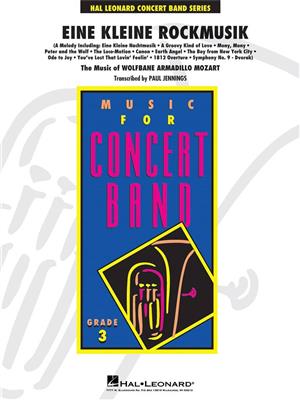 £64.99
£64.99Eine Kleine Rockmusik - Wolfgang Amadeus Mozart
By the time the Mozart family tree had blossomed into the twentieth century, there was very little genius left in the bloodline. Unfortunately, though, at least one unscrupulous descendant, Wolfbane Amarillo Mozart, decided to capitalize on the family name by becoming a rock and roll composer. His only real talent seems to be plagarism, but your students and audiences will have a ball unraveling his zany conconction.
Estimated dispatch 7-14 working days
-
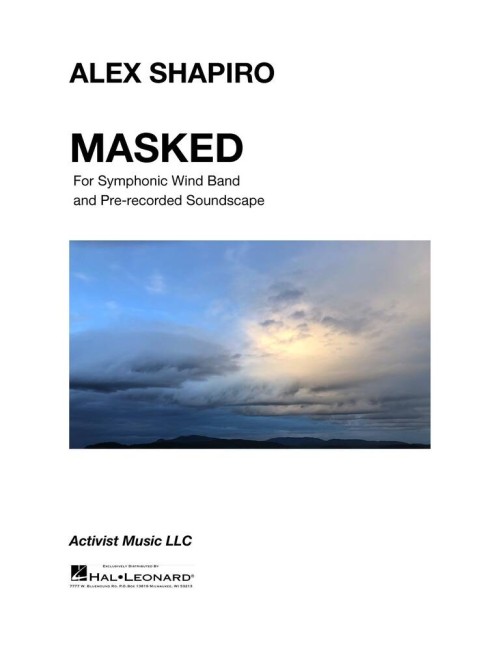 £189.99
£189.99Masked (Prerecorded Soundscape with Concert Band - Score and Parts) - Shapiro, Alex
Movement 3 from SuspendedMasked by Alex Shapiro is composed in the exact shape of a Classical Minuet and Trio waltz, though the music--a whimsical if somewhat demented masked ball (or, balls, in this case)--bears little connection to that of Mozart or Haydn. Historically, third movement Minuets gave way to the joke-like Scherzo, and the Trio section tips its hat to some welcome levity. This is one of four movements in Suspended, a piece is composed in the tradition of an 18th century Classical symphony: four contrasting movements which serve specific functions and reveal a story. The work begins in absolute rage and chaos, then alternates between moments of grief and bleakness. Grim reality shifts to a macabre, circus-like insanity, and by the end, flickers of genuine hope contrast a pervasive sense of dread, and finally arrive at more optimistic possibilities.To perform the piece, you'll need an audio system capable of playing the pre-recorded audio tracks from a laptop computer via a small digital audio interface connected to an audio mixer. Download information is provided in the printed piece.Duration: 5.00
Estimated dispatch 7-14 working days
-
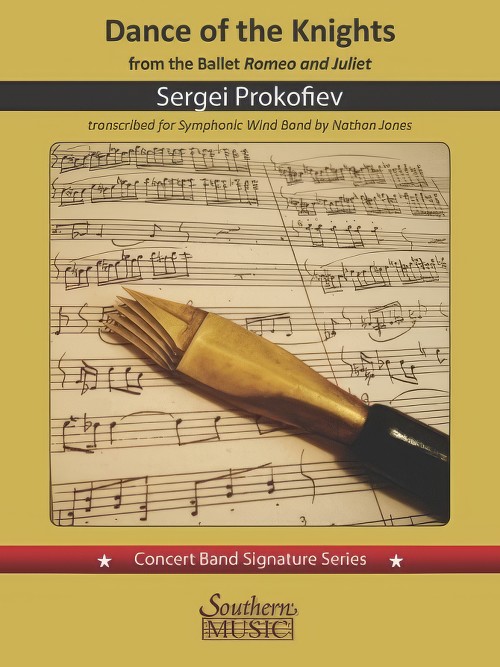 £104.99
£104.99Dance of the Knights (from Romeo and Juliet) (Concert Band - Score and Parts) - Prokofiev, Sergei - Jones, Nathan
This publication marks the first-ever symphonic wind band edition of the Dance of the Knights, from Scene 2 Capulet's Ball of Prokofiev's ballet Romeo and Juliet. "[The ballet] led to one of the most beloved dance works in the repertory and a series of famous orchestral suites... but the celebrated legacy of Romeo and Juliet belies its tortured history: It left Prokofiev broken and emerged from a period that left many of his colleages dead." (New York Times). Nathan Jones' scoring for symphonic wind band faithfully captures the magic of the original orchestraion of this famous work, which has been heard in numerous films and TV shows, including The Simpsons, Warm Machine, Good Morning Britain and Gotham, among many others. This piece is an ideal opener or closer for intermediate to advanced band.Duration: 5.30
Estimated dispatch 7-14 working days
-
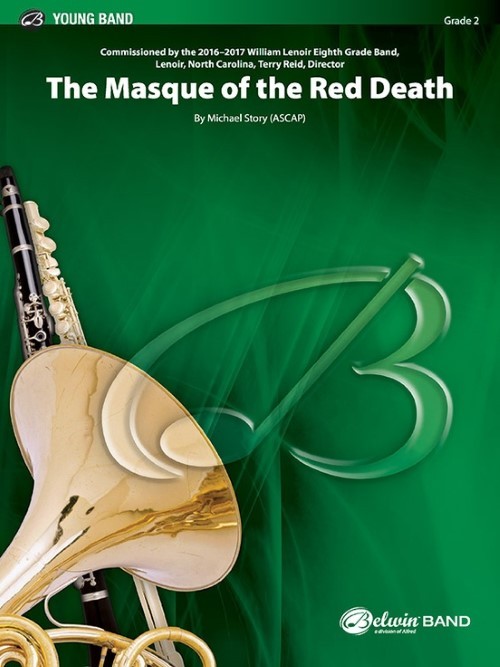 £60.50
£60.50The Masque of the Red Death (Concert Band - Score and Parts) - Story, Michael
Based on the 1842 Edgar Allan Poe short story of the same name, this musically colourful depiction will engage your students by adding cross-curricular significance to reading the story. Those familiar will recognise the clock striking midnight at the masquerade ball. Highly programmatic and compelling!Duration: 3.15
Estimated dispatch 7-14 working days
-
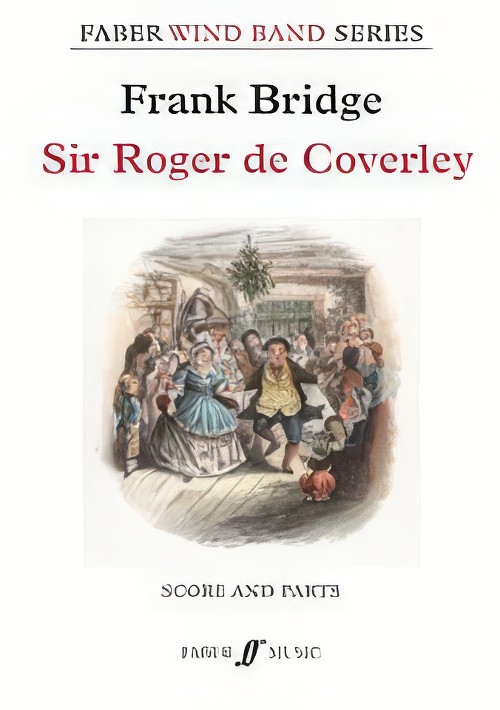 £79.99
£79.99Sir Roger de Coverley (Concert Band - Score and Parts) - Bridge, Frank - Wheeler, Alastair
Frank Bridge (1879 - 1941) was one of the leading English composers of his time. In October 1922 he adapted his popular string quartet Sir Roger de Coverley for full symphony orchestra and Sir Henry Wood agreed, at the last minute, to include it in the last night of the Queen's Hall Promenade Concerts at the end of that month. This elaborate and colourful orchestral version has never been widely performed, but has now been brilliantly transcribed by Alastair Wheeler to provide a miniature dance poem for grade 5 level concert band. Bridge's lively treatment of one of England's most famous traditional dance melodies will make a fitting end to any concert, with the strains of Auld Lang Syne introduced by Bridge as a nod towards Sir Roger de Coverley's traditional function as the final dance of a Christmas Ball, as it was in Old Mr. Fezziwig's party in Dickens' A Christmas Carol.
Estimated dispatch 7-14 working days
-
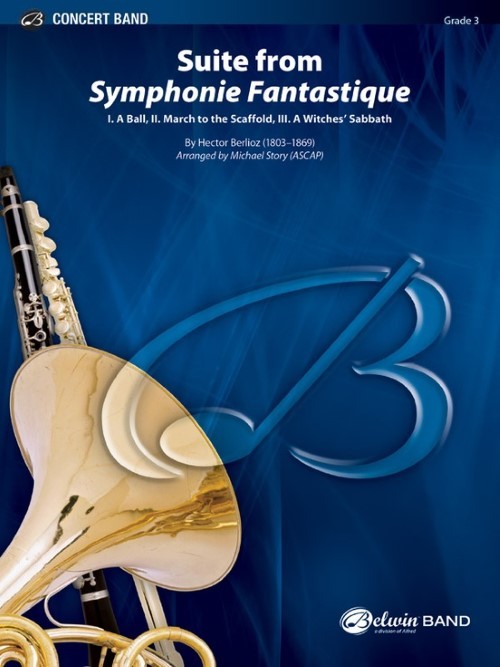 £71.95
£71.95Symphonie Fantastique, Suite from (Concert Band - Score and Parts) - Berlioz, Hector - Story, Michael
Including three movements from Berlioz's five-movement Symphonie Fantastique, originally composed in 1830, "A Ball," "March to the Scaffold," and "A Witches' Sabbath", this masterwork is revered as one of the most vivid program pieces in classical music, and remains to this day one of the most popular works of the Romantic period. Carefully scored for the contemporary concert band.Duration: 6:45
Estimated dispatch 7-14 working days
-
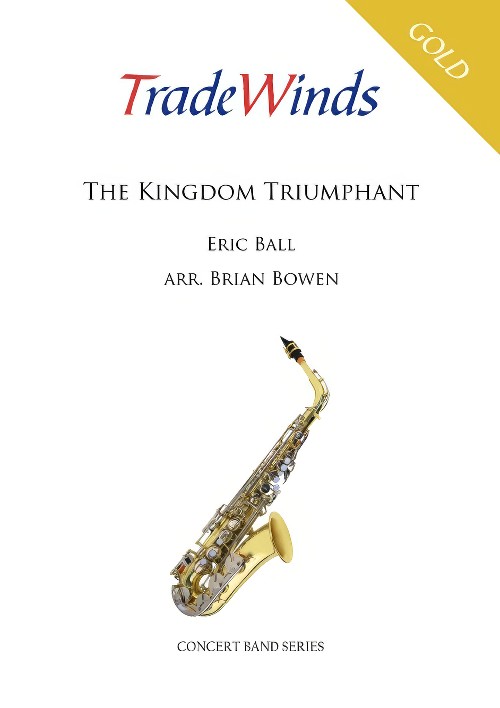 £79.95
£79.95The Kingdom Triumphant (Concert Band - Score and Parts) - Ball, Eric - Bowen, Brian
This iconic 'tone poem' in three movements, but played continuously, uses the tunes 'The blast of the trumpet', 'O come, o come, Emmanuel' and a triumphant treatment of the stirring tune 'Helmsley'.
Estimated dispatch 7-14 working days
-
 £15.95
£15.95The Kingdom Triumphant (Concert Band - Score Only) - Ball, Eric - Bowen, Brian
This iconic 'tone poem' in three movements, but played continuously, uses the tunes 'The blast of the trumpet', 'O come, o come, Emmanuel' and a triumphant treatment of the stirring tune 'Helmsley'.
Estimated dispatch 7-14 working days
